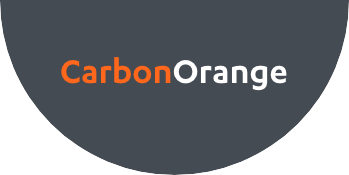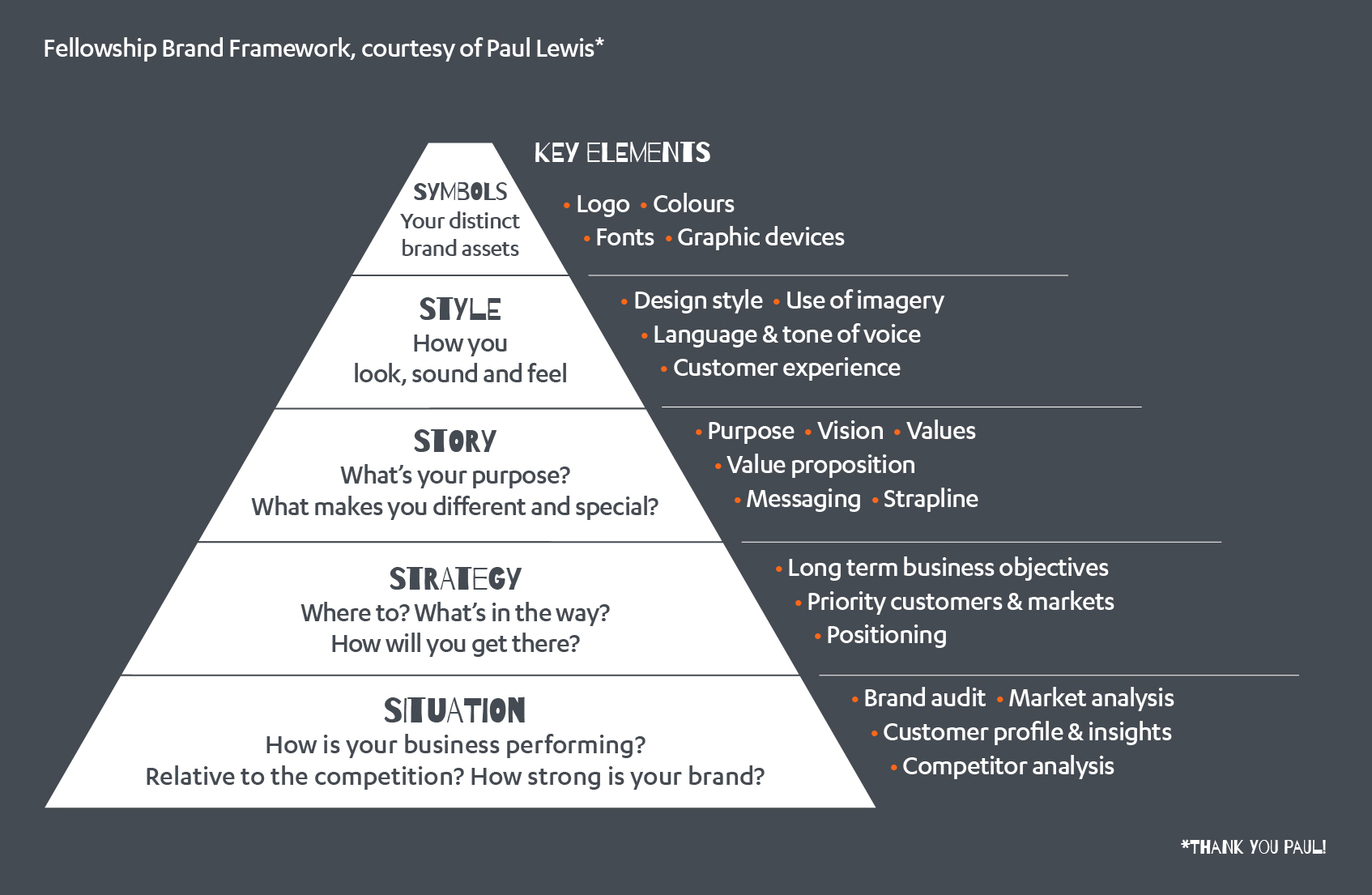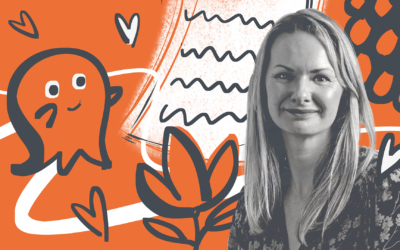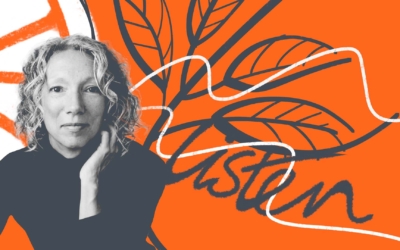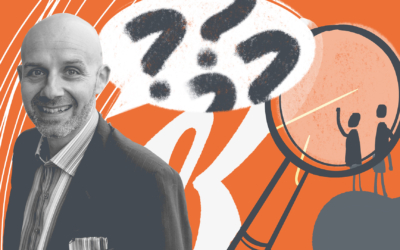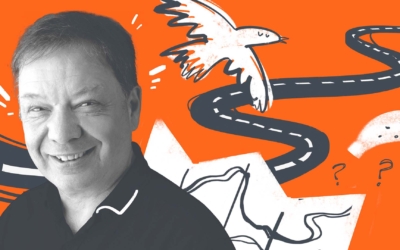My first question for you is, how did you get into doing what you’re now doing?
Well, I started life as an entertainer. I did a lot of cabaret, I sang with a jazz band, and I was one of the paid professional singers in a church choir. When I turned 18, I went to uni, but by the time I was 27, I realised I needed a real job. Very few people can make a living doing what they love in music, they usually have to have three or four jobs. The only other thing I knew how to do was write.
I’ve been interested in computing my whole life. I joined the world’s first computer club for children in 1970. It turned out that writing about technology paid double than writing about anything else. I discovered I had a talent for explaining technology to people who don’t know anything about that particular technology. By the end of the 1990s, I’d been an editor-in-chief for three technology publications.
My ability to explain technology to people who weren’t specialists in that field became my secret sauce.
When all the print publications moved to online, my publishers wanted me to run a 24/7 technology new desk, and that didn’t appeal to me. So I moved over to an incredibly niche field, which was doing public relations for semiconductor design and intellectual property companies.
Apparently, this progression from journalism to PR to marketing communications is a fairly well trodden path. The through line of my career, in addition to explaining technology, was that I had developed a technique. I trained a whole bunch of product managers in Arm on this technique, and a lot of them tell me they still use it.
It consisted of four questions. Because Arm is a B2B company, the first question was: Who is your customer’s customer and what do they need?
After we’d answered that question, we’d ask:
What does your customer need to provide to fulfil their customer’s need?
What do we do that helps our customer?
And then finally: How does it work?
(Just a note, if you’re selling directly to your customer, you only need the second, third and fourth questions.)
The answers to those questions became the structure of every product announcement, journalist presentation or marketing collateral.
Those four messages would be at the top of every press release. Especially in Arm’s highly technical field, this format allowed any journalist to tell a complete story, from the most newsworthy point to the point that’s only interesting to real nerds.
When I began in the semiconductor field, most of the journalists were former engineers themselves. But by the time I left the industry, there were a lot of people reporting on the technology who didn’t have the same level of knowledge. I made them feel clever by telling the story in a way that anyone could understand.
Readers need to know what the product is supposed to do and what the benefits are, and some are interested in the technical details. Telling those stories is how I ended up having a marketing communications company.
My next question, I think some of that you’ve sort of covered a bit in the story. But what is it particularly about doing what you do that gets you excited?
When I help someone clarify any of the things you’re talking about here, [in the Logo is to brand diagram] under story — purpose, mission values, value proposition, messaging strapline — it’s exciting.
In the most recent workshop we gave, there were two guys from a company I’ve known a long time. They’re very good at what they do – but if you go to their website, there’s absolutely no way to figure out what they do. They use all these phrases, but it doesn’t tell me what they do, who their clients are and what the benefits are to their clients.
They wrote their three statements: Who is your client and what do they need? How do you fulfil that need? And then how does it work?
For “how does It work?” I suggested that they focus on their differentiation. They had taken our market research workshop the week before. So we had already tried to get them focusing on who is their ideal customer, and why is that ideal customer ideal for them? And where do they want their business to be five years from now?
Do they just assume that this customer is ideal, or have they done the market research to find out, yes, these are the people we really should be targeting? They’re the people who most need us, and we would enjoy working with them.
For the pre-workshop assignment, they had written their three statements, and during the workshop I put these up on a slide. And I said, guys, I hope you don’t mind, but reading this, I wouldn’t know what you do. And one of them said, you know, we wrote this together and looking at it, I don’t have any idea what I meant, either. And in five minutes, I managed to pull out of them exactly what they do, exactly who their customers are, and exactly the benefit they provide. I was flying.
So that I think those are the two exciting things, to help people get clear on just what it is they have to offer. And the other thing is that just by discovering this information, you have all the messaging you need to launch a product or a company.
I used to tell people at Arm that when they’ve written their four statements, then the press release, the analyst presentation, the journalist presentation, just writes itself.
Bonus question! What’s your favourite fruit?
I don’t eat much fruit, so peach because you can make two of my favourite cocktails with it!
Who are your favourite kinds of clients either from like a point of view of what sector they’re in, or the kind of characters that you like working with?
I love working with founder-led businesses. Even if they have 500 people, if they’re still run by their vision and mission, I enjoy working with them. And if they have an intentional corporate culture that lets everyone know what the business stands for. That’s why working for small businesses is just so incredibly enjoyable, because you’re working with the very people who had the idea and are still passionate about it.
One of the joys of the last past year or two is the variety of clients. I mean, yes, of course, I’m still very comfortable working with high-tech clients, but I’m also working with business to consumer companies. The variety is huge fun.
The other thing is, clients have to be open to listening to what the market research tells them. And that’s not as common as you think. There are a lot of people who think they know everything about their market, and that no market research is necessary. We had a client last year who had a printshop with a lot of services, and he thought he was targeting the right customers on his website.
Your website is your shop window, and you can’t put everything in the window. You need to target your highest-value customers. Our client was resistant to doing market research, because he’d run a printshop for 20 years. He knew what he was doing. He knew what his customers wanted. And he knew why his customers valued him.
When we finally convinced him to do a little bit of research, it turned out he was totally wrong about the thing his customers most valued about his services.
He thought it was because he offered varied and complex printing, signage, vinyl and automobile wraps. It turned out that what they most valued was his design team, who acted as brand guardians. They made sure the customer’s brand guidelines — colours, logos, typefaces — were followed strictly, so they didn’t have to worry about getting a product where the colours or typeface were wrong or the spacing was ugly.
His customers said it was useful to have the other services available, but they could have found that in other places. What they valued about his shop was that his designers owned the customer’s brand.
So that would be the three things I look for – founder-led; all the people on board with the mission, the passion; and open to open to market research.
What brands out there are you in awe of that are doing this particularly well?
Well, I’m going to do an obvious one and say PayPal. You go to the homepage of PayPal; it says exactly what they do and the value of it. It just couldn’t be simpler.
For the last couple of years, in our business network, we’ve been talking about the five-second rule for website home pages. The first thing the visitor sees, without scrolling down, is supposed to answer three questions in five seconds: What does this company do? Am I their target market? What will my greatest benefit be? And then it has to have a call to action. Companies that do that well, are just really impressive, no matter what industry they’re in. Because apparently, if you don’t convey that in the first five seconds, that’s when most newcomers to your site will leave.
So I admire any company who can do that in the above the fold section and continue that simplicity of expression through the rest of the site.
Another company whose brand I admire is DressCode Shirts.
I think [founder] Andy Boothman does an amazing job of letting me know that I’m his target market. He’s created a category called GeekLux. In the first five seconds on their website, I know they make shirts. Good. I need shirts. I love the look. I love the style. I don’t know what GeekLux is, but I’m a geek. So obviously, I want to be a really lux geek!
What’s the effect of what you do on the next step of the pyramid? How do you see it into the next?
Once you have your value proposition as honed down as you possibly can; once you have messaging that speaks directly to your ideal client; and once you have defined the company’s purpose and mission and values and all of that lovely stuff that goes around messaging, my feeling is that the style comes right out of it.
I remember when you and I started collaborating on River Otter [Laurence’s former business], and we both got all excited about why I’ve always resonated so well with river otters. Whatever they do, they do it exuberantly.
And I think probably people would say, yeah, that’s Laurence’s style.
The joy was to discover that I could be my own brand. And I think that literally once we came up with the name, River Otter Communications, it was all over. I was able to write my three statements about the business, I was able to write the boilerplate.
Everything about the brand style that you conjured up practically telepathically for me was based exactly on my core values and the benefits I bring to clients. And when I tested the messaging on them, bless them, they said yup, that’s what you do. Which was really scary.
So I think how messaging feeds into style is that once you’ve got all of those things that Paul listed on his on his triangle understory, that dictates style?
Once you got once you’ve got the story, you’ve got the style, and everything else just falls out of that.
